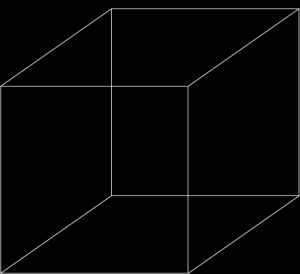July 13, 2003
Perspective
 | The one of the philosophers is dropsical and wants to be washed seven times in the river, just as Naaman, the leper, washed in the Jordan. |

 |
"Perspective is of fundamental importance for several reasons. As a systematic method of representation it is one of the distinguishing characteristics of advanced technological societies. In the Renaissance it was an example par excellence of western achievement."
The Sources and Literature of Perspective
| We tend to forget that people did not always see the world the way we do. A good example is the phenomenon of the development of 3-D perspective in the Rensaissance, which transformed how we represent the world to ourselves.
Filippo Brunelleschi discovered Linear perspective in the early 15th century. More than an artistic technique, the development of perspective is a foundation for both modern technology and psychology. Technologically, perspective is a basis for empiricism and the rise of the scientific method. Psychologically, perspective put the individual at the center of his/her experience for the first time in history, and freed thought and imagery from the static plane. This is a giant step forward, not only in being able to "see" in three dimensions, but in creating a "virtual" reality inside a "virtual" space -- as the metaphoric representation of human psychological reality. |
Getty Museum: The Geometry of Seeing: Perspective and the Dawn of Virtual Space
"Next, Grotstein extends Bion’s observation that the "container-contained" relationship presupposes notions of psychic space or "inner space" - the relation between the mind and the contents it houses: "all psychopathology can be thought of as conditions or states in which the patient experiences a sense of being trapped within a psychic space that is characterized as the zero, first, or second dimensions" (p. 84). Grotstein likens the "null" dimension to a single point on a Cartesian, polar-co-ordinated graph. The null dimension of space is infinite and timeless; it correlates to phenomena such as solipsism, fusion, and concretization. The first dimension introduces a basic concept of separation, a self-other distinction that involves time and distance. Grotstein depicts the first dimension as a line on a polar co-ordinated graph. In keeping with the paranoid-schizoid position, the first dimension permits no degrees or margins of ambiguity – the approach of the good mother presupposes the departure of the bad mother and vice versa. If the infant feels depleted and hungry, then mother’s breasts must necessarily be full. The second dimension, a line now extended to a plane, is two-dimensional and depthless. It correlates to the phenomena of flattened states, phenomena such as depression and apathy, tired clichés and lifeless conventionality. Finally, Grotstein refers to a third dimension of depth characterized by a movement into whole object relations, a greater acceptance of separation, an understanding of the multiple origins of causality and an appreciation of symbolism."
Keith Haartman: Review: James Grotstein: Who is the Dreamer Who Dreams the Dream
Erwin Panofsky's explanation of Iconography and Iconology
Quotes from the book The Psychology of Perspective and Renaissance Art by Michael Kubovy
Piero della Francesca and the Two Methods of Renaissance Perspective
Computers and Renaissance Perspective
Nina Joblon: Power, Illusion, and the Technology of Perspective in the Renaissance
Renaissance Perspective Examples